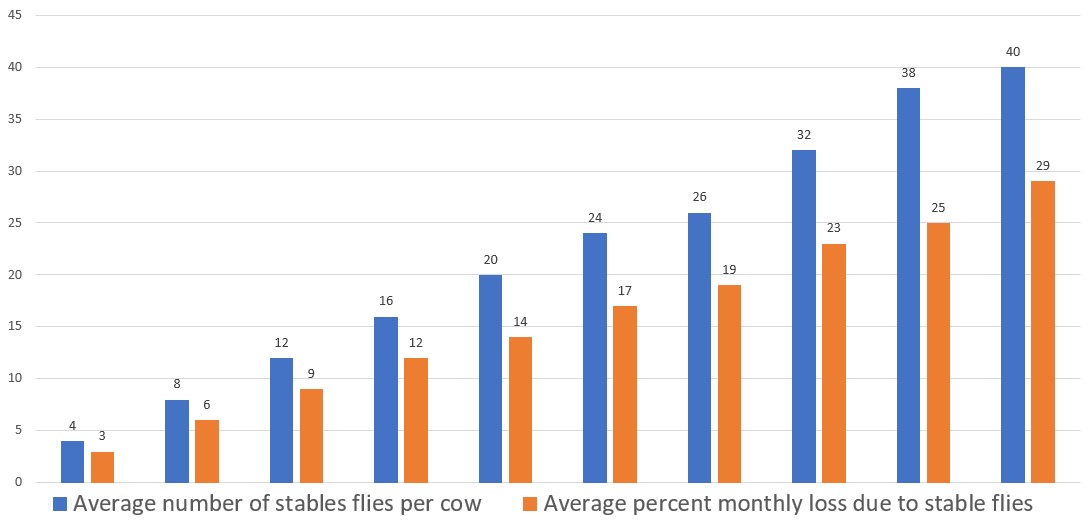How Much Money are Stable Flies Costing Your Business?
Milk Production Loss Related to Stable Flies (Stomoxys calcitrans)

Cattle farms are the optimal breeding ground for nuisance flies; the abundant moist and protein rich manure provides the ideal circumstances for fly populations to take over a farm.
During the mid-twentieth century, researchers discovered that a cow with approximately 20 flies on its legs is correlated to a 15% decrease in milk yield (Bruce and Decker, 1958).
Furthermore, a fly infestation can indirectly impact on the bottom line as flies cause an enormous amount of stress for cows and contribute to the spread of summer mastitis.
Cattle farms come in many varieties with a number of different systems in use. Whether you keep your herd on deep litter, cubicles with a sand and scraper system, or on slatted floors, Bye-o-Fly® offers a solution that keeps flies permanently at a low numbers. The key to successful fly control is always prevention at its source, which is exactly what Bye-o-Fly® fly predators do.
Biological control of flies using Bye-o-Fly® beneficial insects has proven to be incredibly effective on cattle farms. Bye-o-Fly® natural fly predators are completely harmless to animals and humans and carry no pathogens.
Our integrated fly control system is a unique approach. We utilise a range of different insects and baited fly traps to target each life stage of the fly. We provide bespoke release protocols which are specifically tailored for each individual location and offer round the clock advice to help you to reduce the flies on your farm to a minimum.
Our solutions:
Bye-o-Fly L (fly larvae predators)
Fly larvae control for tanks, channels collection pits and lagoons.
Bye-o-Fly P (fly pupae predators)
Fly pupae control for buildings with deep litter, calf pens and hutches, muck heaps etc.
Bye-o-Fly E (fly egg predators)
Predatory mites targeting fly eggs in any fly breeding are during the summer months
